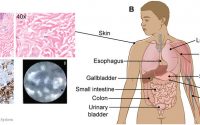Understanding and Addressing Muscle Pain
A review published in the Journal of Physiological Sciences reviewed
fundamental studies on muscular pain, encompassing the characteristics of primary afferent fibers and neurons, spinal and thalamic projections, several muscular pain models, and possible neurochemical mechanisms of muscle pain.
Muscle pain, a common yet understudied phenomenon, affects a significant portion of the population, particularly those experiencing chronic conditions like low back pain, myofascial pain syndromes, and delayed-onset muscle soreness (DOMS). Despite its prevalence, muscle pain has historically received less attention in medical research compared to cutaneous pain. This article provides an overview of the mechanisms underlying muscle pain, with a focus on DOMS, and offers insights into prevention and treatment strategies for therapists.
Key Characteristics of Muscle Pain
Muscle pain is distinct from cutaneous pain in several ways:
- It is often diffuse and aching.
- It can refer to distant somatic areas.
- It is frequently accompanied by changes in muscle hardness.
These characteristics are linked to the unique neurochemical mechanisms of muscle pain, which involve stronger spinal neuron activation, greater influence from the descending inhibitory system, and heightened sensitivity of muscular afferents to nerve injury.
Historical and Neurochemical Insights
Research on muscle pain began in the 1960s with the identification of sensory afferents responsible for conveying noxious signals from muscles to the spinal cord. While early studies suggested that muscle pain was transmitted via Group III (Aδ) and Group IV (C) fibers, recent findings indicate that C-fibers play a critical role in DOMS. Sensitization of these fibers, particularly in response to mechanical stimulation, is a key factor in the development of muscle pain.
DOMS: Mechanisms and Models
DOMS, a common experience after unaccustomed or strenuous exercise, is characterized by tenderness and movement-related pain that typically peaks 24-72 hours post-exercise and resolves within a week. Eccentric exercise, such as lengthening contractions (LC), is a primary trigger for DOMS. While traditional views attribute DOMS to microdamage and inflammation, recent studies suggest that neurochemical mechanisms, particularly involving bradykinin, nerve growth factor (NGF), and glial cell line-derived neurotrophic factor (GDNF), play a more significant role.
- Bradykinin-NGF Pathway: Activation of B2 bradykinin receptors during or immediately after exercise triggers the release of NGF, which sensitizes nociceptors and contributes to mechanical hyperalgesia.
- COX-2-GDNF Pathway: Cyclooxygenase-2 (COX-2) upregulation post-exercise leads to the production of prostaglandins, which stimulate GDNF release. GDNF, in turn, sensitizes Aδ-fibers, contributing to muscle pain.
These pathways interact synergistically, amplifying the pain response. Ion channels such as TRPV1 and ASIC3 are also implicated in the sensitization of nociceptors during DOMS.
Prevention and Treatment Strategies
- Pharmacological Interventions:
- COX-2 inhibitors (e.g., celecoxib) can prevent DOMS when administered before exercise but are ineffective once DOMS has developed.
- Nonsteroidal anti-inflammatory drugs (NSAIDs) like aspirin and ibuprofen may reverse DOMS symptoms when given 24 hours post-exercise, potentially through COX-independent mechanisms such as TRPV1 and ASIC inhibition.
- Non-Pharmacological Approaches:
- Thermal Therapy: Hot packs can alleviate DOMS by reducing muscle stiffness and improving blood flow.
- Manual Therapy: Massage has been shown to reduce DOMS, likely by modulating pain pathways and reducing muscle tension.
- Exercise Adaptation: Prior exposure to weaker eccentric or isometric contractions can reduce the severity of DOMS in subsequent sessions, a phenomenon known as the “repeated bout effect.”
- Exercise Prescription:
- Eccentric exercises, while effective for muscle strengthening, should be introduced gradually to minimize DOMS. This is particularly important for elderly individuals or those with cardiovascular or respiratory limitations, as eccentric exercises can enhance muscle strength with lower oxygen consumption compared to concentric exercises.
Clinical Implications
Understanding the neurochemical mechanisms of muscle pain, particularly DOMS, allows therapists to develop more effective prevention and treatment strategies. By incorporating pharmacological and non-pharmacological interventions, therapists can help patients manage muscle pain more effectively, improving their quality of life and adherence to exercise programs.
Conclusion
Muscle pain, particularly DOMS, is a complex phenomenon influenced by neurochemical pathways involving bradykinin, NGF, GDNF, and ion channels like TRPV1 and ASIC3. Therapists can leverage this knowledge to implement targeted interventions, including pharmacological treatments, thermal therapy, manual therapy, and tailored exercise programs, to prevent and alleviate muscle pain. By doing so, they can enhance patient outcomes and promote long-term musculoskeletal health.

